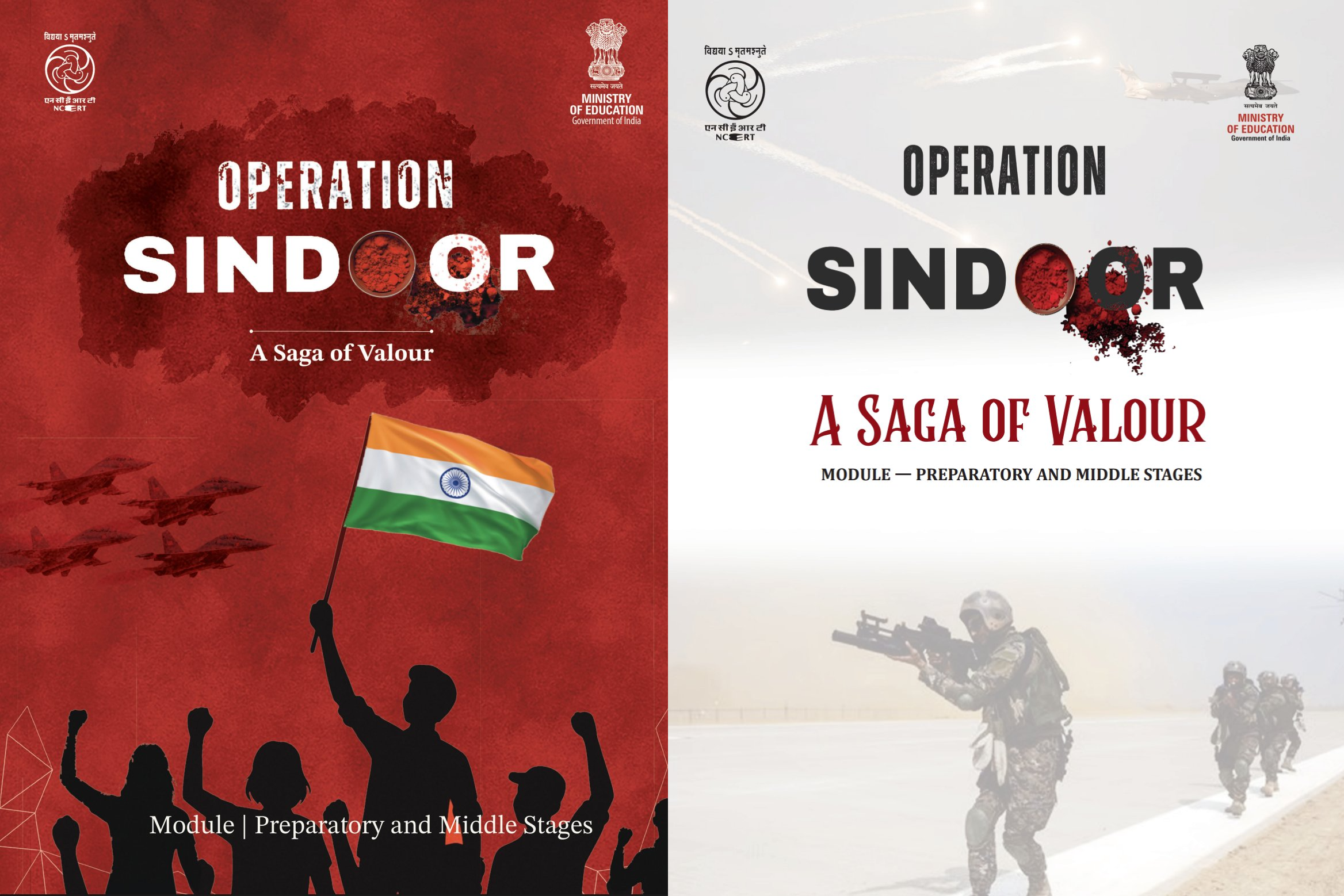The National Council of Educational Research and Training (NCERT) on Tuesday introduced new modules on Operation Sindoor, describing it as a “military success, a technological breakthrough, and a political message rolled into one.”
The modules, designed for middle and secondary school students, include images of downed Pakistani drones, maps marking India’s precision strikes on terror camps in Pakistan and Pakistan-occupied Jammu and Kashmir (PoJK), and references to Made-in-India defence systems. Written in a conversational style between teachers and students, they explain how India launched the decisive campaign in May 2025 following a terror attack in Jammu and Kashmir.
“Operation Sindoor was not just a military operation but a promise to protect peace and honour the lives lost,” the text notes.
Before describing the operation, the modules revisit key milestones – such as the 2019 Pulwama terror attack that killed 40 CRPF personnel, the subsequent Balakot airstrike, and the abrogation of Article 370. They highlight the peace and development that followed in Jammu and Kashmir, including upgraded schools, rail connectivity, and record tourism, while stating that “Pakistan was not ready to see peace in Kashmir after Article 370 abrogation.”
The modules are titled Operation Sindoor – A Saga of Valour for Classes 3-8, and Operation Sindoor – A Mission of Honour and Bravery for Classes 9-12.
They recount the April 22, 2025, terror attack in Pahalgam’s Baisaran Valley, where 26 people, including one Nepali citizen, were killed by The Resistance Front (TRF) terrorists. Prime Minister Narendra Modi is quoted as cutting short his Saudi Arabia visit to return home, strongly condemning the attack, and joining the nation in mourning. The modules also recall candlelight marches, Muslim communities wearing black armbands, and border villagers demanding strong action.
The turning point, according to the text, came on May 7, 2025, when Operation Sindoor was launched at 1:05 am. Explaining the name, the module says: “Sindoor symbolises the marital bond. By naming the operation Sindoor, the leadership and armed forces paid tribute to the widows of the victims, showing solidarity, empathy, and respect.”
The strikes, executed in just 22 minutes, targeted nine terror bases in Pakistan and PoJK, including Muridke and Bahawalpur – strongholds of Lashkar-e-Taiba and Jaish-e-Mohammed. The module highlights the role of Made-in-India defence systems, Rafale and Su-30MKI jets using indigenous BrahMos missiles, and drone-based real-time surveillance, backed by ISRO satellites.
Pakistan’s retaliation with drones, artillery, and a major missile offensive was neutralised by India’s multi-layered air defence grid, including S-400 and Akash systems. “Not one critical Indian asset was damaged,” the module underlines.
The Indian Navy’s dominance in the Arabian Sea and the Border Security Force’s success in foiling infiltration attempts are also detailed. Defence Minister Rajnath Singh is quoted as saying the operation proved “India can break through any enemy defence using what we’ve made ourselves.”
While noting the loss of 14 civilian lives in Pakistan’s ceasefire violations, the module stresses that India avoided targeting civilians, framing the strikes as “a precise and responsible answer to Pakistan-sponsored terrorism.”
The lessons conclude by highlighting India’s diplomatic outreach, including the US declaring TRF a foreign terrorist organisation in July 2025 after evidence was shared. They reinforce the idea that the terror attack sought to divide communities, but “people chose unity and courage.”
(With inputs from ANI)














